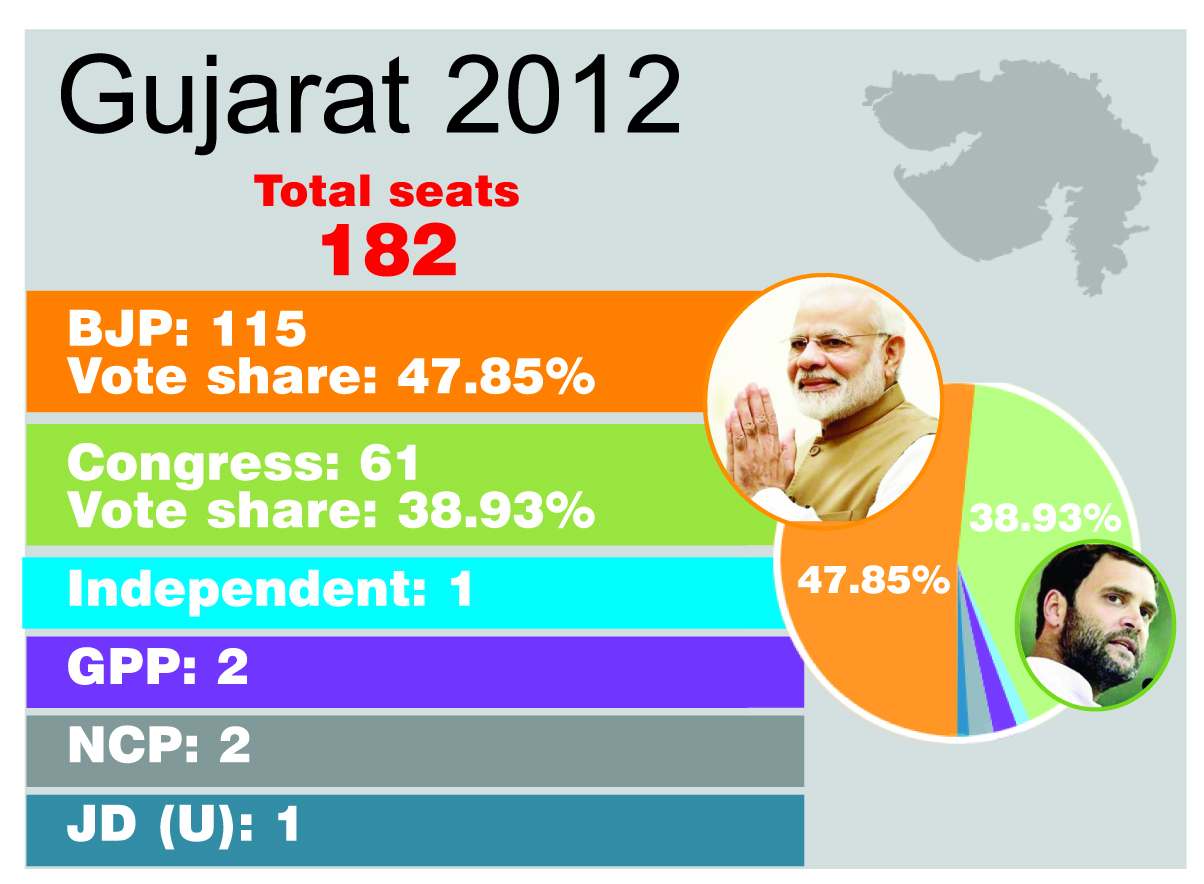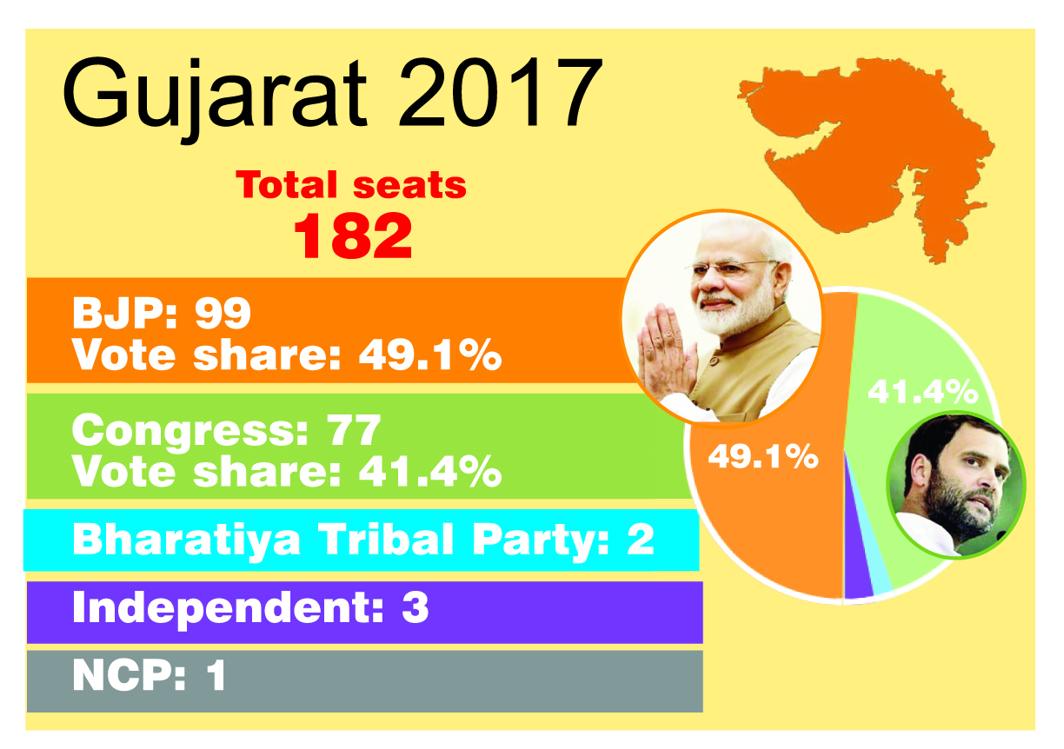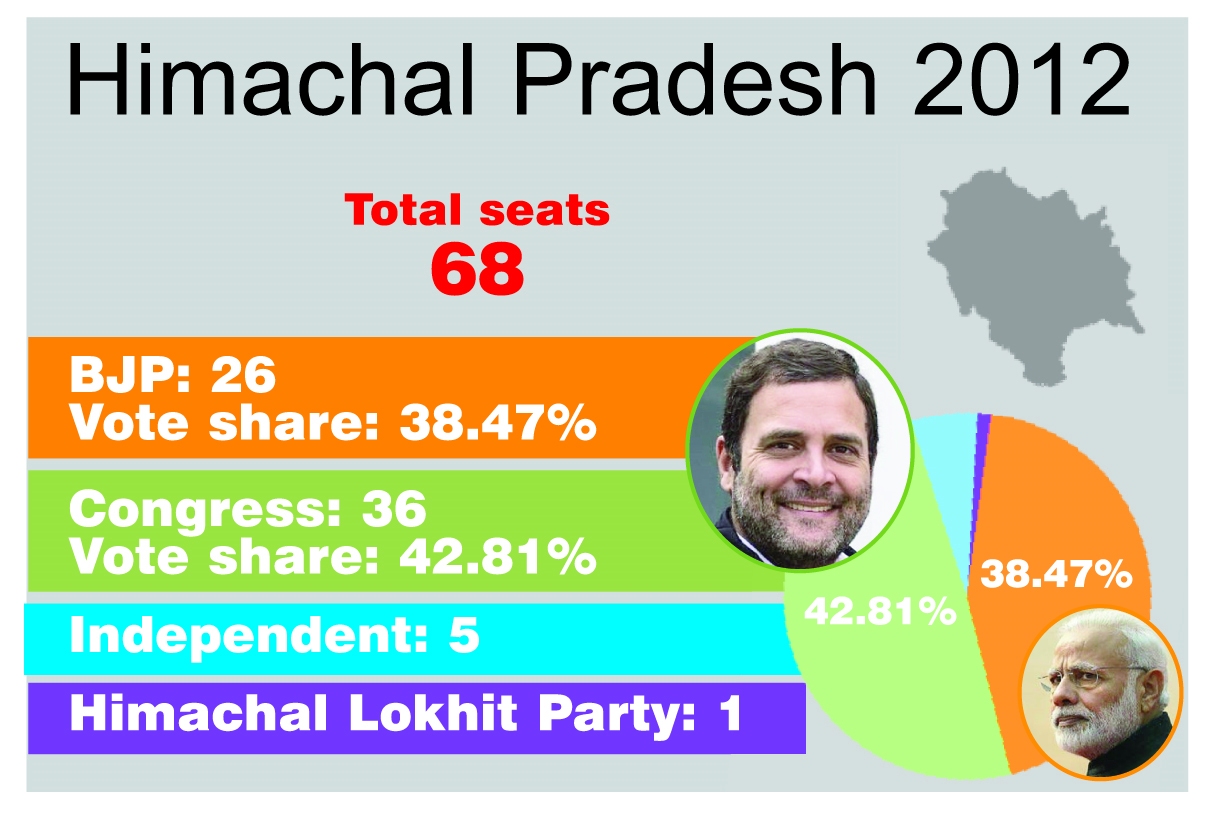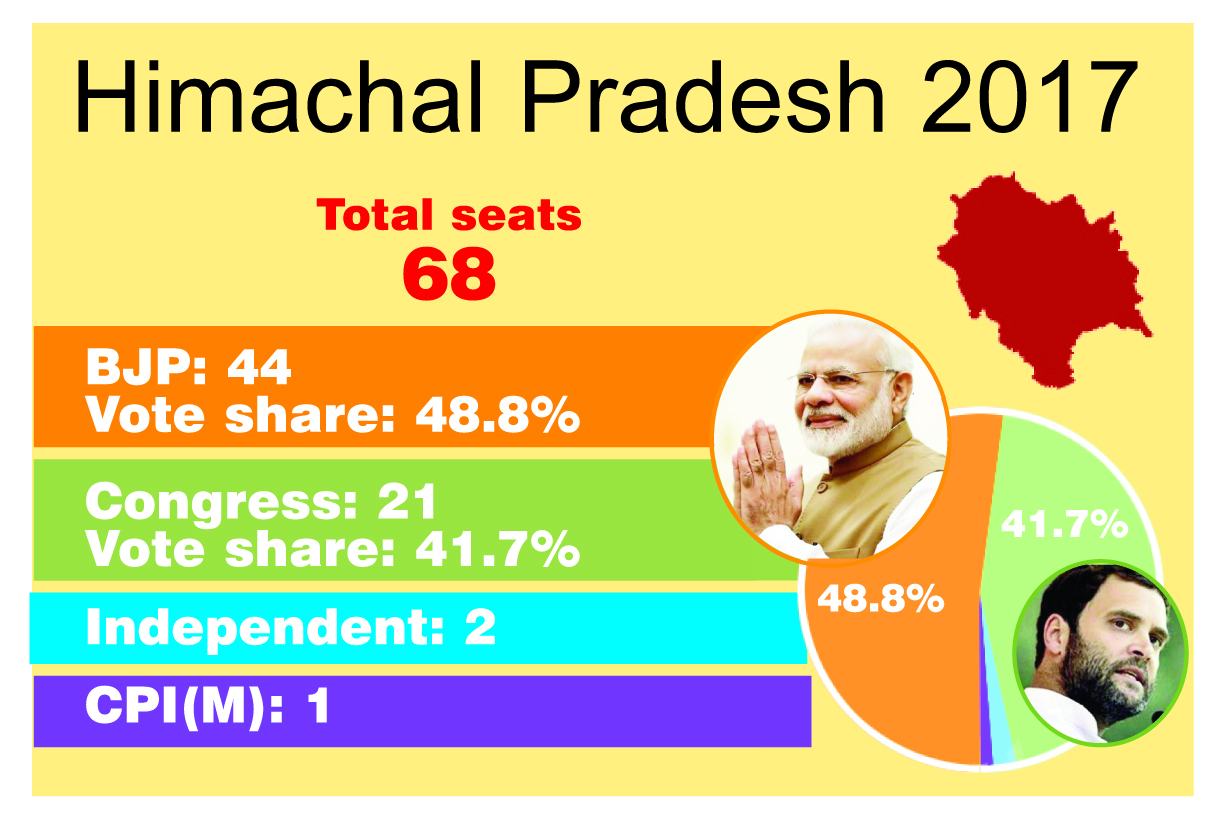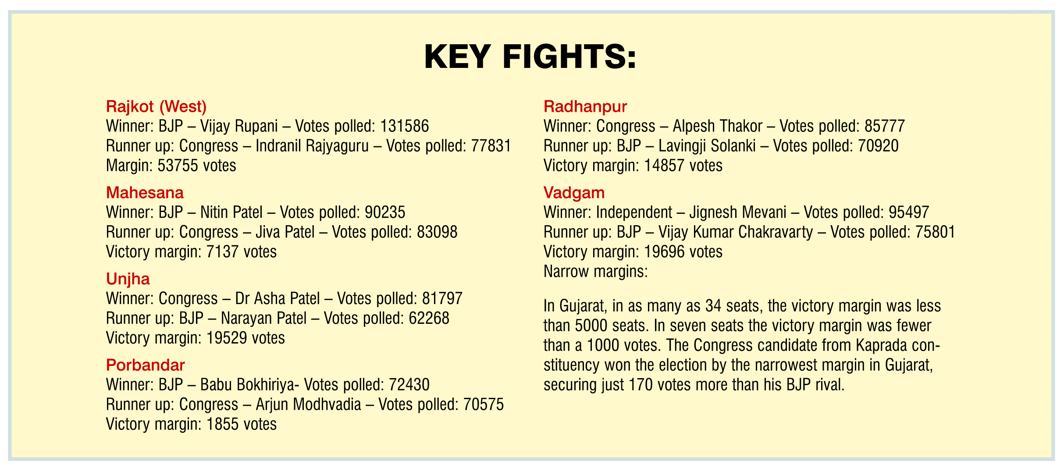
Above: Gujarat BJP workers celebrating paty’s victory in assembly polls in Ahmedabad on December 18. Photo: UNI
In a nail-biting finish where leads and trails changed every 30 minutes, BJP finally managed to retain its 22-year-long hold over Gujarat although its tally in the 182-member Assembly came down to 99 – its lowest since 1995 – while the Congress party, which fought the polls under the leadership of Rahul Gandhi registered a huge jump in its vote share and won 77 seats.
In Himachal Pradesh, the electorate followed the traditional practice of not voting an incumbent government back to power and chose the BJP over the Virbhadra Singh-led Congress. However, in a setback for the saffron party, its chief ministerial candidate and veteran, Prem Kumar Dhumal suffered a comprehensive defeat from his pocket-borough of Sujanpur. The BJP won 44 of the state’s 68 assembly constituencies, containing the Congress to just 21 seats although the Grand Old Party’s chief ministerial candidate Virbhadra Singh as well as his son, Vikramaditya – who made his electoral debut in these polls – both won from the Arki and Shimla (Rural) seats, respectively.
Though the BJP is predictably going overboard to brandish its victory in Gujarat as an endorsement of Prime Minister Narendra Modi’s governance at the Centre and his leadership, the fact is that the result is a major setback for the saffron party. Modi had made this election a prestige battle. As trends after the first phase of polling in the state – which saw votes being cast for 89 of the 182 seats – showed a clear upswing in favour of the Congress, the Prime Minister flew back to his home state invoking blatantly divisive and polarising issues like the ‘Pakistan conspiracy’, his own ‘lower caste and humble beginnings’ which he claimed were being mocked by political rivals as ‘neech’, ‘whether the voters want a mosque or a temple’, et al.
The final results in Gujarat show that the Congress clearly performed brilliantly in the first phase of Gujarat elections where it had in 2012 only secured 22 seats. The 89 seats that went to polls in the first phase fell in the state’s Saurashtra, Kutch and South Gujarat regions – the traditional strongholds of the BJP. The Congress managed to win an impressive 40 seats here, scoring a clean sweep in districts like Gir Somnath, Narmada, Tapi, Junagadh, Amreli, Surendranagar, Dangs and Morbi.
It was in the second phase of Gujarat elections, when the 93 seats from north and central Gujarat went to polls, that the Pakistan broadside against the Congress made a debut and helped the BJP tide over to the winning side.
What seems to have also helped the BJP greatly in Gujarat is party president Amit Shah’s expertise at micromanaging poll strategy. He successfully helped the party consolidate its votes in areas where the Patidar agitation led by Hardik Patel had little to no effect due to a smaller if not negligible presence of the Patidar community. The focus of consolidating votes of smaller communities, especially those who would not vote alongside the now-Congress-leaning Patidars, helped the BJP increase its vote share from 47.85 per cent in the 2012 assembly polls to an impressive 49.1 per cent in 2017 despite fewer seats falling in its kitty.
In the urban centres, which traditionally vote for the BJP, the unrest among Gujarati traders who were upset over the GST regime, had been contained by Modi in the weeks leading up to the polls by smartly and timely getting the GST council to overhaul the tax slabs and highlight that the tax on Gujarati staples like khakra (an early decision) or on cloth and jewellery – the two key commodities dear to Gujrati traders – was reduced.
Modi and Shah, sources say, also managed to get many independent candidates fielded from seats where the party was expecting a tough fight against the Congress. As a result, these independents managed to wean away the anti-BJP votes while the saffron party’s candidate managed to sail through. This was evident in constituencies like Mahesana where there were over 20 independent candidates in the fray and BJP heavyweight Nitin Patel – deputy chief minister in the last government – managed to win by a margin of just 7137 votes. Nitin Patel’s victory margin was less than the total votes polled by all the independents – votes that could have gone in favour of the Congress had these candidates not been in the fray.
—India Legal Bureau


